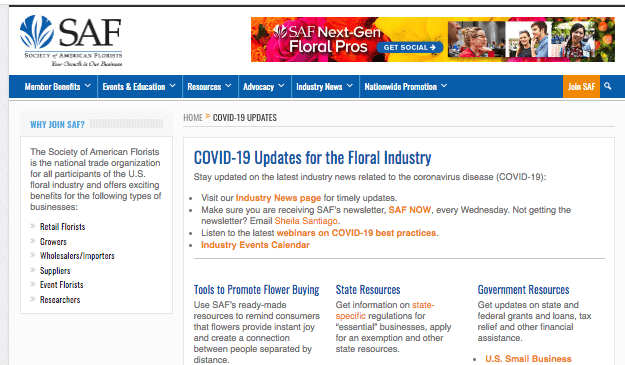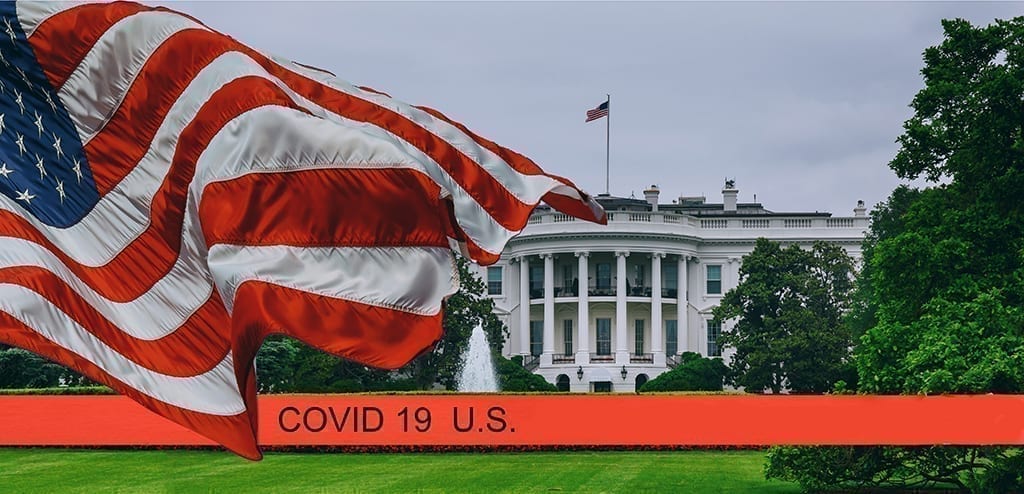 Spring crops are planted. Trucks and planes are still moving — on modified schedules. But with states and municipalities strengthening social distancing measures and government-mandated business and school closures, demand for cut flowers has plummeted — and that reality is straining the supply chain.
Spring crops are planted. Trucks and planes are still moving — on modified schedules. But with states and municipalities strengthening social distancing measures and government-mandated business and school closures, demand for cut flowers has plummeted — and that reality is straining the supply chain.
Those insights — along with resources and workarounds to help florists get the flowers they need — emerged March 23 during “Sourcing Fresh Product — The New Normal,” the fourth webinar session in the Society of American Florists’ new series on COVID-19.
“Our logistics are based on demand”— and right now, demand just isn’t there, said panelist David Armellini, president of the trucking company Armellini Industries, headquartered in South Florida. “Last week we were 65 percent off our normal volume. Today, we’re at 10 percent.”
Here are key takeaways from the session that relate to the current supply chain:
Flowers are available. Panelists Dave Pruitt, CEO of the California Cut Flower Commission, and Christine Boldt, executive vice president of the Association of Floral Importers of Florida (AFIF), confirmed that growers in both California and South America have product and are able to ship it. One significant challenge: That low demand creates low volume, which leads to a ripple effect — flights from South America may wait a day for more volume, trucking companies can’t operate in a cost-effective way without a certain level of product.
Boldt also confirmed that imbalances between northbound and southbound freight between Miami and South America have led to a reduced number of routes. However, she added, flower/import inspections are still happening in Miami with no reports of government agents being furloughed. Flights out of California are also still happening, though, again, with reduced volume, Pruitt said.
Health restrictions have gone into effect in Colombia, Ecuador and California. While those situations continue to evolve, as of March 24, Asocolflores, the Colombian Association of Floral Exporters, had confirmed with SAF that it had secured exemptions from the government for “farms to continue operating.” (SAF is reaching out to floral groups in Ecuador to get additional information on that country’s situation.)
Pruitt noted that USDA classifies floral as part of agriculture, and that CCFC is working on resources to support its members.
Both Pruitt and Boldt emphasized Armellini’s point that the biggest issue is “demand.” Spring crops are in the field, they pointed out, and industry businesses along the supply chain — growers, importers, wholesalers and transportation companies — continue to rotate and move product to ensure florists are receiving high quality blooms.
The supply chain has been disrupted — but there are solutions. Some industry businesses, including growers and wholesalers, have temporarily closed operations or scaled back this week and last in response to COVID-19 restrictions and that precipitous drop in demand. That reality is reshaping parts of the supply chain in the short-term.
The best advice for florists who need product, according to panelists, is to stay in regular communication with your regular supplier, including your wholesaler. (The Wholesale Florist & Florist Supplier Association, wffsa.org, is also maintaining a list of active members.)
Even if your usual wholesaler closes or modifies its schedule, in some cases, retail florists may be able to pool their orders and have them delivered from that wholesaler via a ground service such as UPS — at rates that allow them to still leverage shared costs, suggested panelist and SAF President Chris Drummond, AAF, PFCI, of Penny’s by Plaza Flowers in Philadelphia.
In addition, and as the situation continues to involve, some California growers and Miami importers who normally sell only to wholesalers are looking at selling directly to retailers in markets where the usual channels have been disrupted.
“Most of that will be shipped Fed Ex, if long distance,” said Pruitt. “We also have trucking out of California that will hit nine major Western states,” although most of that, he added, goes only to major cities within those states. Flowers can also be shipped by air directly to retailers if they can pick them up at the airport.
Expect for some policies to change. For example, more sales will probably be by credit card, Pruitt pointed out: “Everybody is having cash flow issues right now.” A list of growers who are able to ship flowers is posted on the California Cut Flower Commission website, ccfc.org. “My goal is that we can also include the major products available for sale,” said Pruitt.
Miami importers are likewise exploring Fed Ex overnight and air shipments if retailers don’t have a wholesaler that’s open, or if their wholesaler is having trouble getting flowers, said Boldt, adding that AFIF is creating a list of importers able to supply flowers.
For imports, too, however, the “pull factor” is crucial: “You can’t bring in too much volume if you don’t know you’re going to be able to sell it,” said Boldt.
Kate Penn, SAF’s CEO, pointed out after the session that many of the supply “fixes” right now are temporary. “Wholesalers are a critical part of the distribution channel and vital to a retailer’s ability to source product efficiently and cost effectively. Clearly, these are last resort measures to keep the flow of product to retailers steady, until we get to the other side of this crisis.”
Communication is key. Panelists stressed that floral industry professionals across segments can help the industry now by communicating the unique health benefits of flowers, which are especially in a time of stress, anxiety, and social isolation. (Need inspiration? Check out SAF’s resources.)
Other challenges exist (labor shortages on the farms, fewer planes in the air). But they can all be met. This was the clear consensus of the experts on the webinar panel: “As long as demand is there, florists will be able to count on the supply of fresh flowers.”
Find out more about SAF resources related to the COVID-19 outbreak including a state-by-state listing of regulations, restrictions and resources.
Bruce Wright is a contributing writer for the Society of American Florists.





